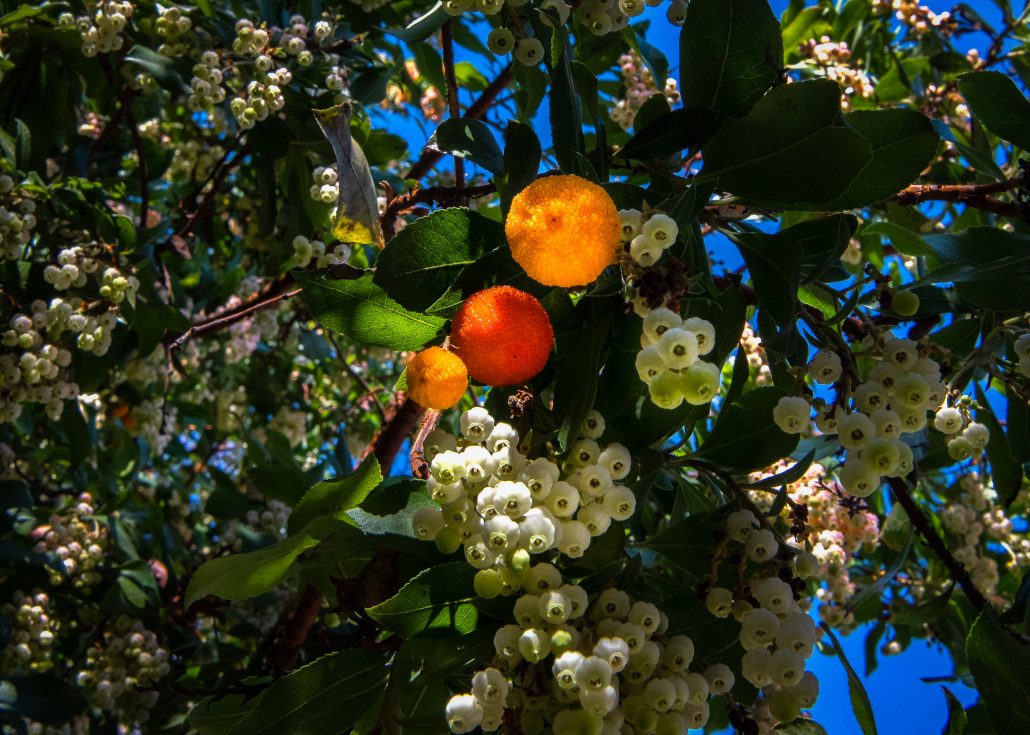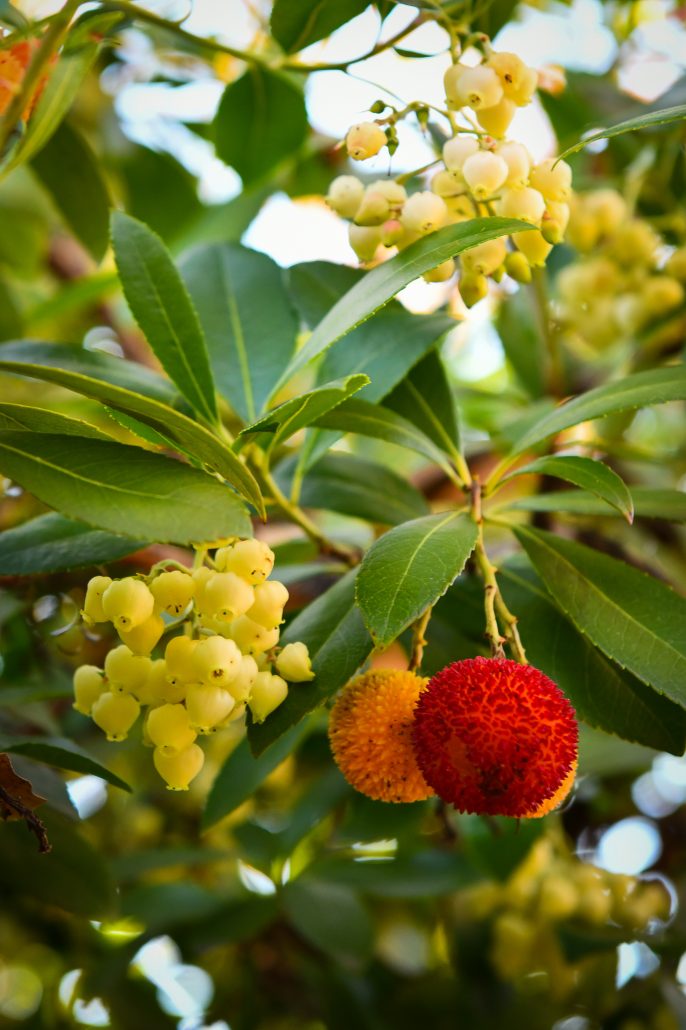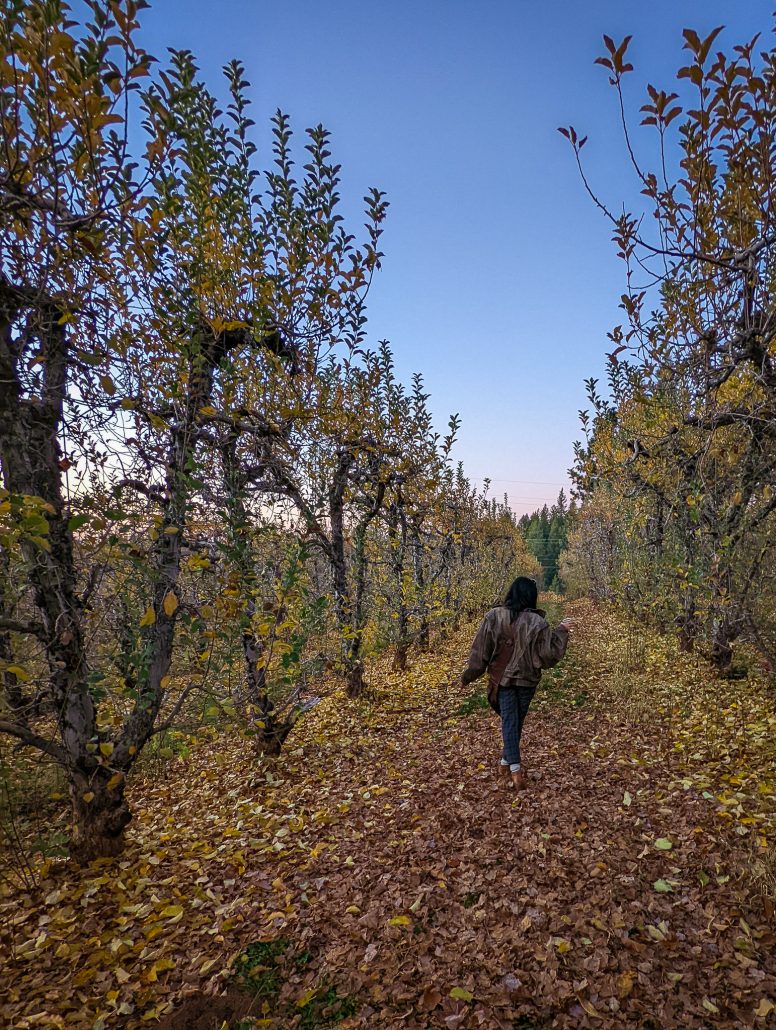Capital Color
Vishal and Seema Mishra returned to Sacramento on Thanksgiving Day, where fall color is peak to past peak.
Areas of peak color include: Capitol Park, Southside Park and William Land Regional Park. Though, beautiful fall color is also found in the Fabulous Forties (Avenues in the 40s), Curtis Park and in mid-town (east of the State Capitol between J and Q, 15th and 25th).
Many of the tallest trees along Sacramento’s streets are London Plane Trees (Platanus occidentalis), though also look for Chinese elm, Autumn blaze maple, Liquidambar, hickory and Gingko biloba.
The first reference to Sacramento being the City of Trees dates back to 1855. Prior to that, the city was known as “The City of Plains.” Then, a gold miner planted 12 cottonwoods. Soon after, it became a community effort to plant shade trees to make life in Sacramento more tolerable during its hot summers, Capital public radio reports.
By the 1930s, residents were planting one tree for every two residents. Paris had a ratio of one for every ten residents, but also many more trees in total that did Sacramento. Nevertheless, Sacramentans couldn’t withhold claiming more trees per capita than Paris, in a feat of civic boosterism.
A 2018 study found 87,234 trees growing in Sacramento, with the Land Park neighborhood having the densest canopy. However, that figure only includes trees that grow along streets and in parks. An authority estimates that about one million trees grow in Sacramento, two for every resident.
With good reason, it has earned the sobriquet, “City of Trees.”
- Sacramento (30′) – Peak to Past Peak, GO NOW, You Almost Missed It.
Apple Hill
Apple Hill, like so many other Sierra foothill areas, has long gone past peak.
Vishal and Seema Mishra visited on Saturday to pick up a pie. The only thing at peak in Camino when they visited were the bakeries out of whose ovens a steady stream of Thanksgiving Day pies emerged. As, there was little color on orchard branches. Most of it was on the ground or baked into the pies.
- Apple Hill, Camino (3,133′) – Past Peak, You Missed It.
Queen of the Southern Mines
This week, the Outdoor Writers Association of California fall conference brought me to Tuolumne County in California’s Gold Country. The conference included craft improvement sessions and business meetings, though I also had time to tour an area I hadn’t explored in years. I found Tuolumne County to be charming, personal and untouched.
While California’s population grows steadily, Tuolumne County’s has hovered – for years – at 54,000 folk. Areas of the County appear as they did in the 1850s when Sonora was called Queen of the Southern Mines and Columbia – to its immediate north – was known as the Gem of the Southern Mines.
Today, Sonora has modern accommodations like the newly renovated Lumberjack Hotel, authentic shops that feature locally made goods, like the Local Collective and Columbia, a state historic park that is California’s equivalent to Williamsburg or Jamestown, Virginia, a wholly preserved gold rush town true to how it looked in the 1850s.
Gold Rush themed activities are common there and across the county. Sip a sarsaparilla or watch a blacksmith work in Columbia; pan for gold or ride a steam train in Jamestown. In winter, Tuolumne County has California’s best sledding hill, the privately operated Leland High Sierra Snowplay Area near Strawberry and one of California’s best family mountain resorts, Dodge Ridge.
Though, the true find for a color spotter was to discover Lost Cannon Creek where by mid October a lush stand of quaking aspen provides what is likely the best display in Tuolumne County, and a grove just waiting for a “First Report.”
At 7,800′, the grove lies beside the creek a half mile after the trailhead near the Marine Corps Mountain Warfare Training Center, east of Sonora Pass. It’s a short, though moderately difficult hike and one to plan to do next October.
I left Tuolumne County at dawn this morning, stopping first at Columbia before returning along Hwy 49 to El Dorado County. A light fog embraced Columbia’s historic Main Street and lanterns lit its leaf-strewn path.
Peak has past in the Gold Country, though a red maple complemented St. James Episcopal Church, beside it. Orange persimmons and liquidambar dressed a Victorian home and orange black oak and cornhusk-yellow locust and red bud decorate the hills.
- Tuolumne County (2,139′) – Peak to Past Peak, GO NOW, You Almost Missed It.
![]()
All Aboard!
Signs of the transition from autumn to winter are appearing increasingly. Near Jamestown, Steve Arita found the Sierra Railroad to be readying Engine #28 to portray the Polar Express during holiday excursions, as shops throughout the Gold Country shift from autumn displays to holiday ones.
As this transition has been occurring, heavy fog has blanketed the Central Valley. This is common in December, though its early mid-November arrival has dampened fall color viewing and instantly discouraged travel to Central Valley wildlife refuges and orchards.
When the fog settles in, color spotters escape the fog by heading up into the Sierra foothills where it’s more certain to be sunny and vibrant. Steve found that to be so, but also that autumn is now nearly Past Peak in the foothills. In Sutter Creek, the blood red branches of a tall liquidambar frame the Methodist church, though few other signs of peak color are seen.
That’s common within the golden chain of Gold Rush towns along Highway 49. About the only gold left to be found is on their Black cottonwood trees.
- Golden Chain Highway, CA-49 (1,188′) – Peak to Past Peak, GO NOW, You Almost Missed It.
![]()
Autumn Sunsets
Now that the wildfires are well behind us and there are breaks in the storms, autumn sunsets have returned.
![]()
Preferred Seating
Walk along the American River and on any rocky shelf, you’re likely to find preferred seating .., the grinding holes of native Maidu women who, for centuries, would sit, chat, sing and grind black oak acorns into flour.
The deepest of the grinding holes often had the best view, were most comfortable and were reserved for the most venerable women who’d earned this preferred seating through years of labor.
Sacramento area color spotter Steve Arita hiked the American River this weekend, stopping to photograph fall color; he came upon grinding holes whose disuse has caused them to become filled with dirt and grasses.
Steve noted that autumn color is almost gone, with sycamore Peak to Past Peak and Frèmont cottonwood from patchy to Near Peak.
- American River, Rancho Cordova (89′) – Peak to Past Peak, GO NOW, You Almost Missed It.
![]()
Jumping for Joy
King salmon were jumping for joy at the new Nimbus Fish Hatchery fish ladder today, and the public was loving it.
A new fish ladder is the reason. It is longer and less abrupt an ascent than the former fish ladder. To keep the hatchery from becoming overwhelmed with salmon, a gate at the entrance to the ladder at the American River near Nimbus Dam is shut causing the salmon to wait impatiently for their run up the ladder and into the hatchery.
With the new viewing area being near where the ladder meets the river, visitors are able to to see just how massive and athletic the salmon are, up close. Spawning salmon will jump nearly five feet into the air at the closed gate out of their ardor to climb the rapid.
Nearby in Folsom, foliage along the Humbug-Willow Creek Bike Trail was peaking and Fremont cottonwood at Mormon Island Wetlands Preserve were Patchy, though approaching Near Peak.
- Nimbus Fish Hatchery, Rancho Cordova – Peak (75 – 100%), GO NOW!
- Humbug-Willow Creek Bike Trail, Folsom – Peak (75 – 100%), GO NOW!
- Mormon Island Wetlands Preserve, Folsom – Peak (75 – 100%), GO NOW!
- American River Parkway – Peak to Past Peak, GO NOW, You Almost Missed It.
![]()
Mining Gold
Yesterday, Steve Arita went mining for gold at Empire Mine State Park in Grass Valley. He found autumn colors at peak with a few trees past peak, but beautiful nonetheless, He recommends getting there quickly to see the best of the remaining color.
One exception is “Maple Lane,” a one-lane road that is surrounded by tall maples. “Most of the trees were lime green, with about 25% at peak.” Steve estimates Maple Lake should continue to improve this week with peak by the end of the coming week.
Empire Mine is described by California State Parks as being “”one of the oldest, largest, deepest, longest and richest gold mines in California” During its active life, the mine generated $10.556 billion in gold bullion in today’s dollars.
- Empire Mine State Park, Grass Valley (2,411′) – Peak (75 – 100%) GO NOW!
![]()
Chinese Pistache

One of the more ornamental of autumn trees is the Chinese pistache (pistacia chinensis).
Popular as a shade tree due to its height at maturity (30 to 60’), drought tolerance, non-invasive roots and broad canopy, its dark green foliage changes to a dramatic profusion of lime, yellow, orange, pink and red fluttering leaves in autumn.
What’s different about Chinese pistache is the iridescence of its color. The trees look absolutely luminous in sunlight.
Although the tree is related to pistacio, it does not produce nuts. Gardeningknowhow.com explains that when male varieties are present, female trees bloom in April with inconspicuous green blossoms that develop into clumps of brilliant red berries in fall, changing to blue-purple in winter.

The website explains that “While the berries are inedible for human consumption, birds go nuts for them.” Though, the bright colored berries will drop and may stain or create a slippery walkway. The bark of growing Chinese pistache is grayish-brown and, if peeled from the tree, reveals a shocking salmon pink interior.
Presently, Chinese pistache are at glorious peak across California. The show varies from somber burgundy to fluorescent colors.

- El Dorado Hills (768’) – Near Peak (50 – 75%), Go Now.
- Sacramento (30’) – Patchy (10 – 50%)





































